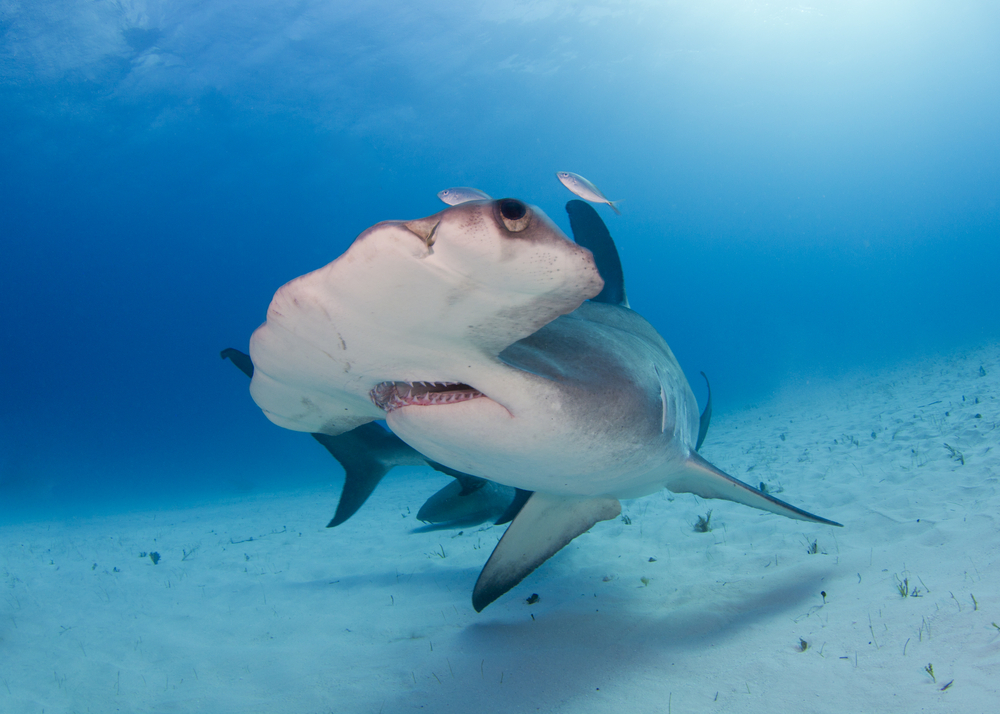
A new study has revealed that great hammerhead sharks swim on their sides for up to 90 per cent of the time, and the unusual stroke is employed to conserve energy, not as a sign of distress, disease or injury, as previously thought.
The behaviour, which has been noted many times around the world but never before properly analysed, was initially presumed to indicate illness, but research jointly undertaken by marine biologists and scientists from Australia, Japan, Belize, Israel and the USA has shown that healthy sharks regularly swim around rolled over at an angle of between 50 to 70 degrees.
Using video cameras and acceleormetres, scientists spied on the habits of five hammerhead sharks living in ocean water off Australia, Belize and the Bahamas. The team noted that each shark regularly swam off-camber, using their large dorsal fins to gain lift. By using this sidestroke, the sharks seem to significantly reduce drag.
‘At first we thought the shark must be sick, but it would switch from one side to the other and once we began looking, we found other examples of this behaviour,’ said Dr Adam Barnett, a researcher at James Cook University and co-author of the study, which was recently published in the journal Nature Communications.
Barnett has stated that the discovery, which came as a complete surprise to the scientists, was a reminder of little experts know about many aspects of ocean life.

‘The side-swimming is something people have observed in aquariums or in the wild that they assumed was a one-off thing, but evidently it’s not,’ agreed Colin Simpfendorfer, Director at the Centre for Sustainable Tropical Fisheries and Aquaculture at James Cook University, and co-Chair of the IUCN’s Shark Specialist Group.
The poser for marine biologists now, is to figure out whether the hammerhead’s dorsal fin is something that has evolved precisely for the purpose of executing a labour-saving sidestroke, or whether it has other uses.
Sadly, the specialised appendage is also a liability for the hammerhead, with the species commonly hunted for its large fin. With their numbers having plummeted by between 50 and 90 per cent in South Africa, and the northwest and western central Atlantic, great hammerhead sharks are now considered a globally endangered species, and they appear on the IUCN Red List.
[geoip-content not_country=”CA”]
ON THE APP
 21st Century Shark
21st Century Shark
Although sharks have existed for thousands of millennia and survived through several mass extinctions, over the past century many of these incredible creatures are on the verge of being wiped out by mankind. Follow marine biologists attempting to raise public awareness of sharks and protect these ancient predators from becoming modern day prey.
Want to watch 21st Century Shark for free right now? Subscribe to the Love Nature streaming app and start your 30-day free trial of the best on-demand natural history documentaries out there. [/geoip-content]

 21st Century Shark
21st Century Shark